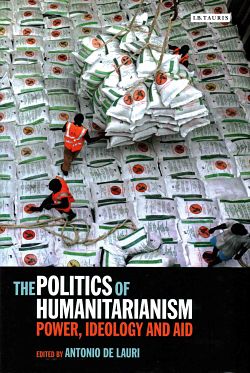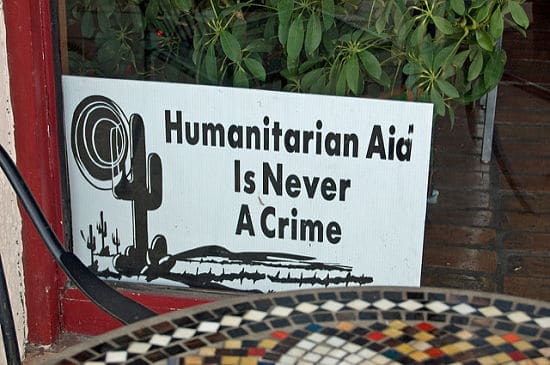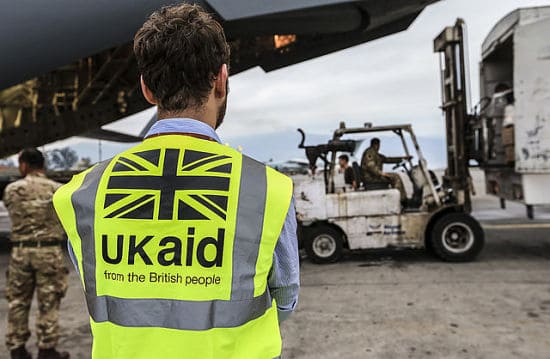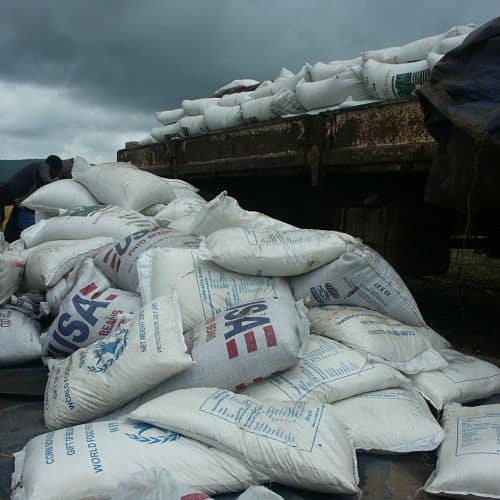Humanitarianism is a chimera, arguably an infection, but certainly an ethos and organising principle of our age that intersects with transformative moral-political modes of inquiry and praxis. This edited volume enlists an array of controversies that the humanitarian megalith entails, via contributions from anthropology, law, international relations, development and migration studies. This diverse coalition provokes shifts away from recursive academic scripts of ‘saving lives’ and ‘helping those in need’ toward a different, more complicated kind of political and ideological commentary that sees contributors critically unpack the constitutive relation of humanitarianism in diverse contexts, and create new understandings that are tentatively shared.
Its success lies in the balance achieved between the imputed certainty in humanitarian discourse and intervention, and the uncertainty produced by richly textured critique and combinations of interpretation across a range of not always complementary perspectives.
De Lauri introduces ways humanitarian-‘ism’ embodies ‘beliefs, practices, categories, discourses and procedures’ (p.1), alongside institutional forms of governance, power and liability invoked through varied applications in business, bureaucratic and military responses, and historical bifurcations of the world into those who aid and intervene and those who receive their loaded gifts.
 Four dimensions keep humanitarianism in good health. First the sympathetic impulse, and its bolstering by high-profile ambassadors and agencies, reinforce the myth that the best possible way of life is the European or American one, and promote over-simplistic solutions to ‘underdevelopment’ that anaesthetise people against empathy and responsibility (p.4). Second ‘humanitarianism functions as an employment outlet for a huge number of graduates and professionals from donor countries’ (p. 5). The large-scale mobilisation of ‘experts’ from donor countries to the Global South is closely tied to the wild-market model of the global economy, and it uncritically juxtaposes the ‘immobility’ of populations of the Global South with unchecked ‘narratives of multitudes of people invading the Global North’ (p. 5). Third the political-economy of humanitarianism as a multi-billion dollar business links to the privatised military industry in re-creating the political ‘need for intervention’ (p. 8). Fourth are hierarchies of humanity and moral certitude generated by a ‘humanitarian culturalism that permeates both military and civil interventions’. (p. 8) Last, De Lauri emphasises that critique can be an important ‘means of imagining the world in other ways. (p.12)
Four dimensions keep humanitarianism in good health. First the sympathetic impulse, and its bolstering by high-profile ambassadors and agencies, reinforce the myth that the best possible way of life is the European or American one, and promote over-simplistic solutions to ‘underdevelopment’ that anaesthetise people against empathy and responsibility (p.4). Second ‘humanitarianism functions as an employment outlet for a huge number of graduates and professionals from donor countries’ (p. 5). The large-scale mobilisation of ‘experts’ from donor countries to the Global South is closely tied to the wild-market model of the global economy, and it uncritically juxtaposes the ‘immobility’ of populations of the Global South with unchecked ‘narratives of multitudes of people invading the Global North’ (p. 5). Third the political-economy of humanitarianism as a multi-billion dollar business links to the privatised military industry in re-creating the political ‘need for intervention’ (p. 8). Fourth are hierarchies of humanity and moral certitude generated by a ‘humanitarian culturalism that permeates both military and civil interventions’. (p. 8) Last, De Lauri emphasises that critique can be an important ‘means of imagining the world in other ways. (p.12)
Inspired by a critical gaze that balances the poles of hyper-subjectivism and systemic explanation, the book tracks across these dimensions as it also keeps in plain view humanitarianism’s self-reproducing, cynical and utopian impulse.
Certainly ‘helping ideologies’ have long saturated stubborn asymmetries and concerns with humanitarianism’s deserving subject: from an orientalist view of regions and nations existing in permanent underdevelopment, to modernist queries about their progressive incorporation into the technological, secularising, and liberalising mission, and regional developments of war, states of emergency, and refugee crises as either forms of circular repetition or descent into chaos. More positively, as a lens through which to comprehend the contemporary world era, humanitarianism augurs possibilities for a power vacuum, with risks and potentials, and for the suspension of hegemonic orders of politics, class and gender. As a response to crisis, this book invites us to approach humanitarianism as a means to turn unpredictability, interruption, and violent loss into opportunities for reflection and new world-making by raising critical questions about ways that power, diverse actors’ intentions, and bald instrumental profiteering can become re-imagined, reframed, and transformed.

The book’s eight chapters reveal some diverse adaptations and critical perspectives on the ideology and politics of humanitarianism.
These encompass the genealogy of intervention, humanitarianism’s workings as a moral pretext, a theatre for specialists, a dark tool of women’s rights, of violence and ‘infantilisation’ in provincial politics, in local and international allocations of international aid, and the management of refugees.
To illustrate, Pandolfi and Rousseau examine how the hyper-mediated context of humanitarianism’s response to a global pietas produce violent, forced forms of humanitarian intervention across borders, and unanticipated consequences. High performance principles akin to business practices align humanitarianism closely to militarisation in processes that leave ‘war and peace, torture and rescue, destruction and development’ indistinguishable (p. 23). Next, Nader and Savinar argue that ‘for-profit’ ideologies lead Western powers to use humanitarianism as a deadly pretext in partnership with high finance, state governance and geo-politics. Building on arguments about philanthropic imperialism, notably by Alex de Waal, they complicate understandings of humanitarianism’s ideological underpinnings through examples from Libya, Palestine, Uganda and the 2010 Haitian earthquake – where political and relief interventions incredibly caused more devastation than the disaster itself.

De Lauri and Billaud’s chapter interrogates the utopian promises of a rhetorical return to normality in Afghanistan. The absolute reversals this shift entails (from war to peace, women’s oppression to freedom etc.) assume the carnivalesque character of political theatre, wherein humanitarianism in action works generatively and deceptively to engender confinement and alienation, and to reveal ‘the irreducible dead ends of the reconstruction project’ (p. 62). Women’s rights discourses, enshrined in international charters and treaties, also concern Grande’s chapter.
Rather than serve social and communitarian needs, Grande shows how they become tools for power and greed – again constituting a kind of reversal – that produces ‘the perfect conditions for a market economy’, and serves to atomise targeted societies in the Global South (p. 77).
Protection is a key humanitarian discourse, enshrined in the doctrine of the UN Responsibility to Protect. In Quaretta’s chapter, Christian evangelisation and colonisation play out in discourses of ‘protection’ in the Democratic Republic of Congo, where ‘saving children’ and ‘children’s rights’ constitute infantilising and political forms of intervention that provide people with aid and support in a collapsing state.
Drawing new meaning for long-term ‘emergency’ programming amid concerns about Al Qaeda in the Arabian Peninsula, Lewis reveals how donor aid shifted towards overtly militaristic agendas in Yemen, including counter-terrorism programming, secret bombings and military campaigns designed to undermine Islamic values and securitise international interventions (p. 139). Finally, Hoffmann analyses the humanitarian management of refugees in the post-colonial context of Syria. Here Iraqi migrants become subsumed within discourses of ‘protection’ serving the normal basis for state sovereignty and a form of government reliant on the systematic exclusion of non-citizens, and the constant production of refugees.

Thereby this volume complements growing studies on variations of the ‘international community’, ‘international humanitarian project’, ‘humanitarian establishment’, ‘humanitarian industry’, ‘strategic frameworks’ and ‘humanitarian architecture’. What it adds to recent works, for example by Allan, Allen, Redfield, Donini, and Schull, who also plough the non-humanitarian uses of human rights and humanitarian advocacy and action, is in the way as a collective endeavor it offers a much needed way to scale out from state and nation, to the international and global and back, and thereby to question what is and is not intelligible about the impacts, outcomes and cultures of the humanitarian project (Apthorpe 2014: 357) [1].
“That is, while the individual chapters each provide fresh insights, the collective ethics of rewriting, rethinking or cajoling the humanitarianism landscape into new critical forms is more dynamic and replete with contradictions, aporias and fundamental questions about the very basis of humanitarianism.”
In sum, this book comprises a singular and important contribution for those wanting to understand how humanitarian interventionism works in ways the violent shattering of some worlds produces dreams and strategies for others.
1. Apthorpe, Raymond (2014) Review Article. Anthropology and humanitarianisms across borders: a growing field of study. Journal of the Royal Anthropological Institute, 20, 357-361.
This review was first published in the Review of Social Studies, Vol. 3, No. 1, Spring 2016.
**********
De Lauri, Antonio. 2015. The Politics of Humanitarianism: Power, Ideology and Aid. London and New York: I. B. Tauris. 240 pp. Hb: £56. ISBN: 9781780768304.
**********
Featured image (cropped) by Stephen H. Padre/Bread for the World (flickr, CC BY-NC-ND 2.0)



